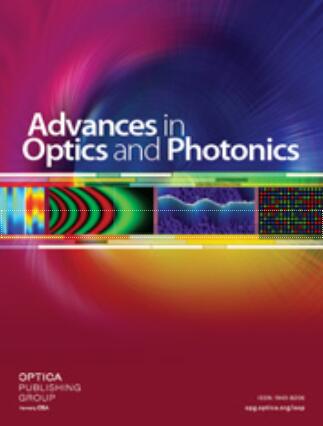Deep learning for camera data acquisition, control, and image estimation
IF 23.8
1区 物理与天体物理
Q1 OPTICS
引用次数: 14
Abstract
We review the impact of deep-learning technologies on camera architecture. The function of a camera is first to capture visual information and second to form an image. Conventionally, both functions are implemented in physical optics. Throughout the digital age, however, joint design of physical sampling and electronic processing, e.g., computational imaging, has been increasingly applied to improve these functions. Over the past five years, deep learning has radically improved the capacity of computational imaging. Here we briefly review the development of artificial neural networks and their recent intersection with computational imaging. We then consider in more detail how deep learning impacts the primary strategies of computational photography: focal plane modulation, lens design, and robotic control. With focal plane modulation, we show that deep learning improves signal inference to enable faster hyperspectral, polarization, and video capture while reducing the power per pixel by 10−100×. With lens design, deep learning improves multiple aperture image fusion to enable task-specific array cameras. With control, deep learning enables dynamic scene-specific control that may ultimately enable cameras that capture the entire optical data cube (the “light field”), rather than just a focal slice. Finally, we discuss how these three strategies impact the physical camera design as we seek to balance physical compactness and simplicity, information capacity, computational complexity, and visual fidelity.用于相机数据采集、控制和图像估计的深度学习
我们回顾了深度学习技术对相机架构的影响。相机的功能首先是捕捉视觉信息,其次是形成图像。传统上,这两种功能都是在物理光学中实现的。然而,在整个数字时代,物理采样和电子处理(例如计算成像)的联合设计越来越多地被应用于改善这些功能。在过去的五年里,深度学习从根本上提高了计算成像的能力。在这里,我们简要回顾了人工神经网络的发展及其最近与计算成像的交叉。然后,我们更详细地考虑深度学习如何影响计算摄影的主要策略:焦平面调制、镜头设计和机器人控制。通过焦平面调制,我们发现深度学习可以改进信号推断,从而实现更快的高光谱、偏振和视频捕获,同时将每个像素的功率降低10−100倍。通过镜头设计,深度学习改进了多孔径图像融合,以实现特定任务的阵列相机。通过控制,深度学习实现了动态场景特定控制,最终可能使相机能够捕捉整个光学数据立方体(“光场”),而不仅仅是一个焦切片。最后,我们讨论了这三种策略如何影响物理相机的设计,因为我们试图平衡物理紧凑性和简单性、信息容量、计算复杂性和视觉逼真度。
本文章由计算机程序翻译,如有差异,请以英文原文为准。
求助全文
约1分钟内获得全文
求助全文
来源期刊

Advances in Optics and Photonics
OPTICS-
CiteScore
56.60
自引率
0.00%
发文量
13
期刊介绍:
Advances in Optics and Photonics (AOP) is an all-electronic journal that publishes comprehensive review articles and multimedia tutorials. It is suitable for students, researchers, faculty, business professionals, and engineers interested in optics and photonics. The content of the journal covers advancements in these fields, ranging from fundamental science to engineering applications.
The journal aims to capture the most significant developments in optics and photonics. It achieves this through long review articles and comprehensive tutorials written by prominent and respected authors who are at the forefront of their fields.
The journal goes beyond traditional text-based articles by enhancing the content with multimedia elements, such as animation and video. This multimedia approach helps to enhance the understanding and visualization of complex concepts.
AOP offers dedicated article preparation and peer-review support to assist authors throughout the publication process. This support ensures that the articles meet the journal's standards and are well-received by readers.
Additionally, AOP welcomes comments on published review articles, encouraging further discussions and insights from the scientific community.
In summary, Advances in Optics and Photonics is a comprehensive journal that provides authoritative and accessible content on advancements in optics and photonics. With its diverse range of articles, multimedia enhancements, and dedicated support, AOP serves as a valuable resource for professionals and researchers in these fields.
 求助内容:
求助内容: 应助结果提醒方式:
应助结果提醒方式:


